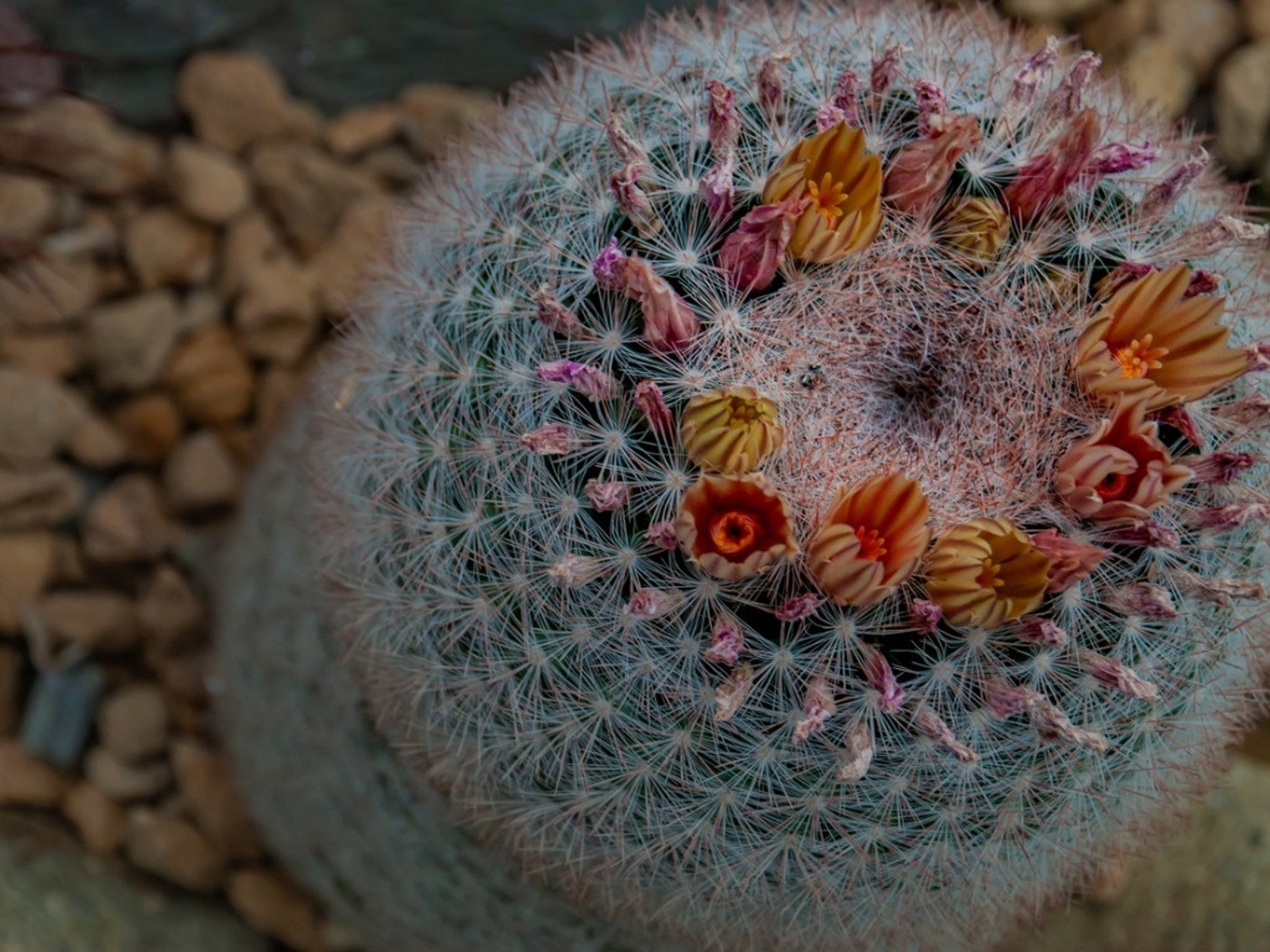Snowball Cactus Care – How To Grow A Mammillaria Snowball Cactus


If you’ve started a cactus collection or just added a few types to go along with your succulents, don’t forget to include the snowball cactus. Mammillaria snowball cacti are easy to grow with only the most basic care.
What is a Snowball Cactus?
The snowball cactus is botanically named Mammillaria candida. It is covered with dense spines and a white substance sometimes called wool. The wool makes it look like a snowball, but be careful of the dense spines.
This is an easy to grow plant and the more sun it gets, the more wool and spines it will produce. Careful with this, though, as too much direct sun can burn this cactus.
Like other cacti, the snowball likes summer heat and morning sun, but it is said to survive well in colder temperatures. And like other cacti, wet soil and cold is deadly to the plant. This plant can be hardy to a low of 23 degrees F (-5° C), but only with dry soil. It is native to Northeastern Mexico where it grows in crevices or flat areas on rocky limestone slopes.
Growing Snowball Cacti
Use thick gloves for protection when handling the plant. Snowball cactus care is simple and easy when it is planted in proper soil. The right soil is porous cactus soil with a bit of compost or other organic matter added.
Acclimate to bright light and eventually full morning sun. Strong sunlight encourages bronzing of the plant and the growth of more spines and heavy wool. Locate the plant in a low humidity area, if possible. You can grow this plant indoors also, in bright light and some direct sun.
Limit watering with all cacti, but especially this one. It is highly water sensitive. This plant has a shallow root system that only needs minor watering. This is also why fast-draining soil is important.
Sign up for the Gardening Know How newsletter today and receive a free copy of our e-book "How to Grow Delicious Tomatoes".
When provided with the right care, the snowball cactus will reward you with small but showy yellow or pinkish blooms rising from the spines in spring. Flowers have pink to red veins. Several subspecies exist with varying flower colors.

Becca Badgett was a regular contributor to Gardening Know How for ten years. Co-author of the book How to Grow an EMERGENCY Garden, Becca specializes in succulent and cactus gardening.